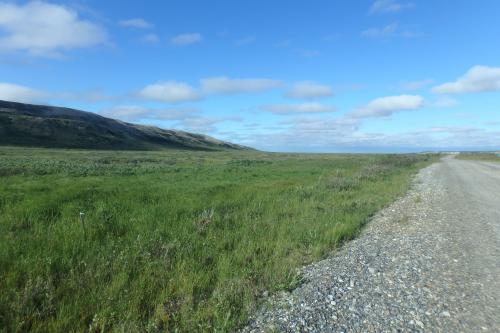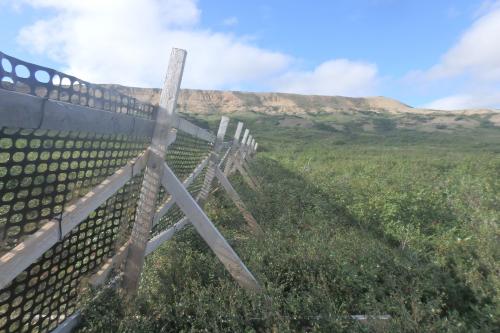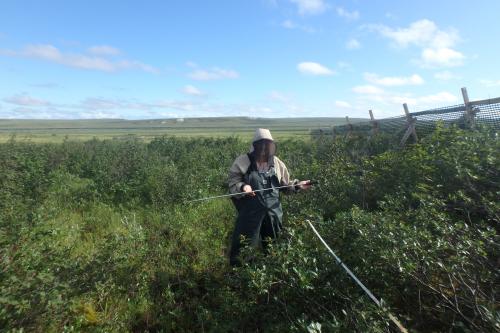Just because the pluck is over doesn't mean that there isn't work to do! On Saturday we headed to the Sagwon site 90 miles North of Toolik. Driving on the Dalton Highway is always an experience and sort of like the old video game Frogger where instead of dodging cars, we dodge potholes. After almost two hours of driving, we passed through the fence and traveled along another dirt road to get to the site. Dr. Bret-Harte has five snowfences out at the Sagwon site. 
The Sagwon site is much different than the snowfence sites at Toolik because of the Alder shrubs that are found here. The shrubs are incredible, thick, and tall. We spend hours bushwacking through the shrubs taking canopy and thaw melt readings. 
In order to find a snow melt thaw record, a probe is used. The probe is put into the earth until it hits the permafrost layer. PermafrostPermanently frozen ground. is defined as earth that has been frozen for two or more years. When the probe hits the permafrost layer, it is like hitting rock. The range of thaw melt differed throughout the five snowfence sites. The least amount of thaw was 2 cm, whereas the greatest thaw depth was at 116 cm.

It was an incredible day. The sun was shining and the temperature was just right for a day in the field working. It was a great opportunity to see a new field site!


Comments